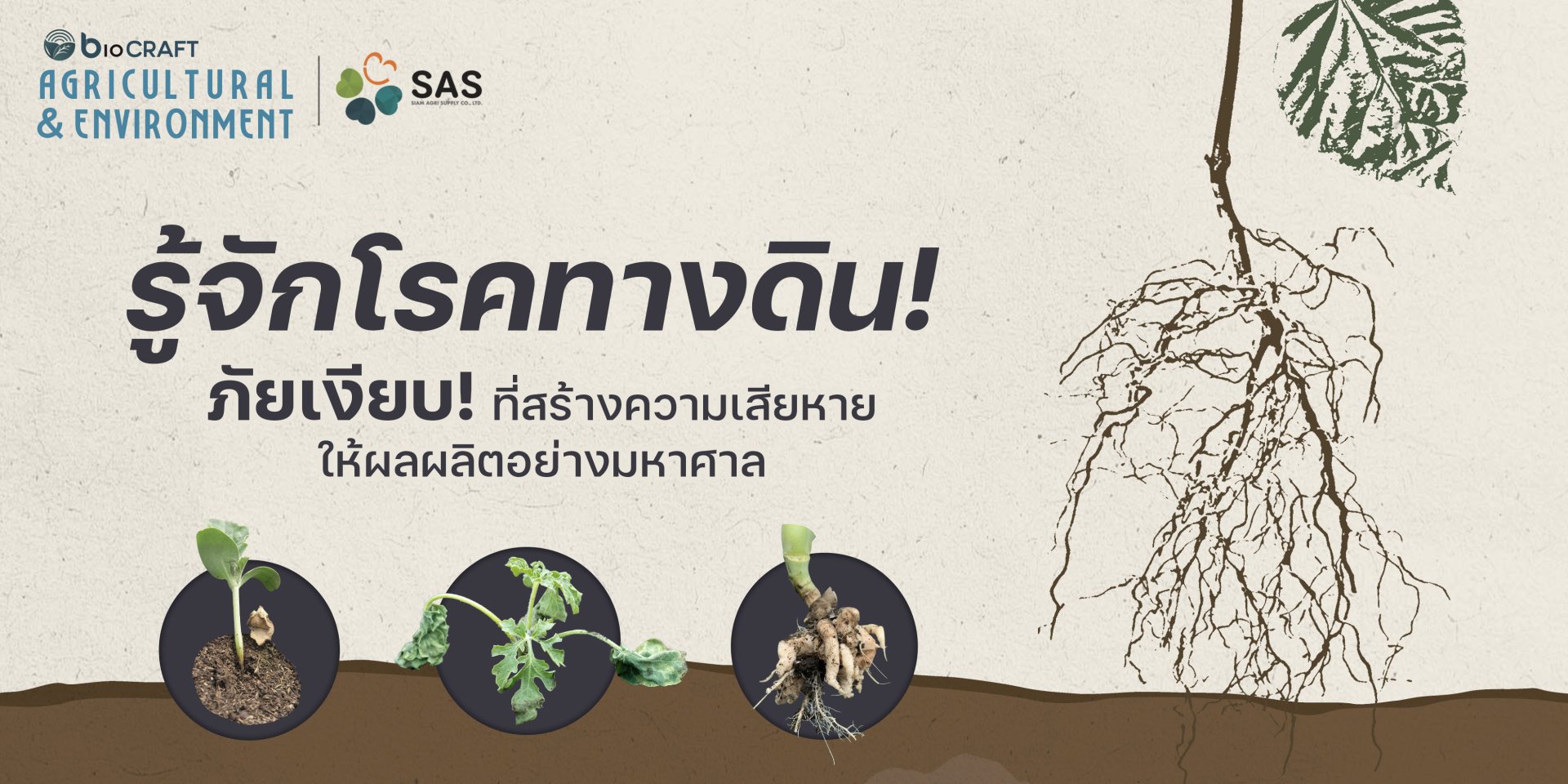Understanding Soil-Borne Diseases
Last updated: 17 Jan 2025
1817 Views

Understanding Soil-Borne Diseases: Effective Prevention and Management
.
Soil-borne diseases are silent threats that cause extensive damage to agricultural crops. These diseases are caused by fungi and bacteria that live in the soil and can attack plants at every growth stage, from seedlings to maturity.
.
Common Soil-Borne Diseases You Should Know
Damping Off
Caused by soil fungi such as Pythium sp. and Phytophthora sp., this disease commonly affects vegetable and field crop seedlings. It destroys the root system and stem base, leading to root rot, weak stems, yellowing leaves, and eventual plant death. The disease spreads rapidly through water.
Root Rot
Caused by fungi like Fusarium spp., Diplodia spp., and Phytophthora spp., root rot is prevalent in waterlogged areas. It can damage crops at all growth stages, causing symptoms such as yellowing and shedding of durian leaves, browning of the stem base, or yellowing and drying of sugarcane leaves. Affected roots exhibit decay and lesions.
Club Root
Caused by the slime mold Plasmodiophora brassicae, this disease is commonly found in cruciferous vegetables. It causes swollen roots, yellowing, stunted growth, and eventually halts plant development. In severe cases, the roots swell into club-like shapes.
Wilt Disease
Caused by the bacterium Ralstonia solanacearum, wilt disease damages plant roots, resulting in lesions, root rot, and rapid wilting. The disease is particularly severe during rainy seasons or in areas with high water content, spreading easily through water and exacerbating the severity of the infection.
.
Soil-borne diseases are silent threats that cause extensive damage to agricultural crops. These diseases are caused by fungi and bacteria that live in the soil and can attack plants at every growth stage, from seedlings to maturity.
.
Common Soil-Borne Diseases You Should Know
Damping Off
Caused by soil fungi such as Pythium sp. and Phytophthora sp., this disease commonly affects vegetable and field crop seedlings. It destroys the root system and stem base, leading to root rot, weak stems, yellowing leaves, and eventual plant death. The disease spreads rapidly through water.
Root Rot
Caused by fungi like Fusarium spp., Diplodia spp., and Phytophthora spp., root rot is prevalent in waterlogged areas. It can damage crops at all growth stages, causing symptoms such as yellowing and shedding of durian leaves, browning of the stem base, or yellowing and drying of sugarcane leaves. Affected roots exhibit decay and lesions.
Club Root
Caused by the slime mold Plasmodiophora brassicae, this disease is commonly found in cruciferous vegetables. It causes swollen roots, yellowing, stunted growth, and eventually halts plant development. In severe cases, the roots swell into club-like shapes.
Wilt Disease
Caused by the bacterium Ralstonia solanacearum, wilt disease damages plant roots, resulting in lesions, root rot, and rapid wilting. The disease is particularly severe during rainy seasons or in areas with high water content, spreading easily through water and exacerbating the severity of the infection.
Related Content
During the summer season, when temperatures consistently soar, heatstroke (or sunstroke) becomes a health threat that many might overlook. In reality, it can be severe, even fatal, especially for high-risk groups such as children, the elderly, and those with underlying health conditions.
11 Jun 2025
Types of Influenza Virus
Influenza viruses are categorized into three main types:
Type A The most severe and highly contagious, e.g., H1N1 and H3N2.
Type B Infects humans, with moderate severity.
Type C Rarely found and typically causes mild symptoms.
17 Jun 2025



